How to Visit Lahic, the Coppersmith Village in Azerbaijan
11 min readAll the best things to do in Lahic, plus my tips for planning your visit to Azerbaijan’s famous coppersmith village.
The sound of tiny hammers beating metal skips across the cobbled streets and rings out through the hills. From the shadowy depths of their workshops, a hundred artisans and tinkerers form Lahic’s copper orchestra.
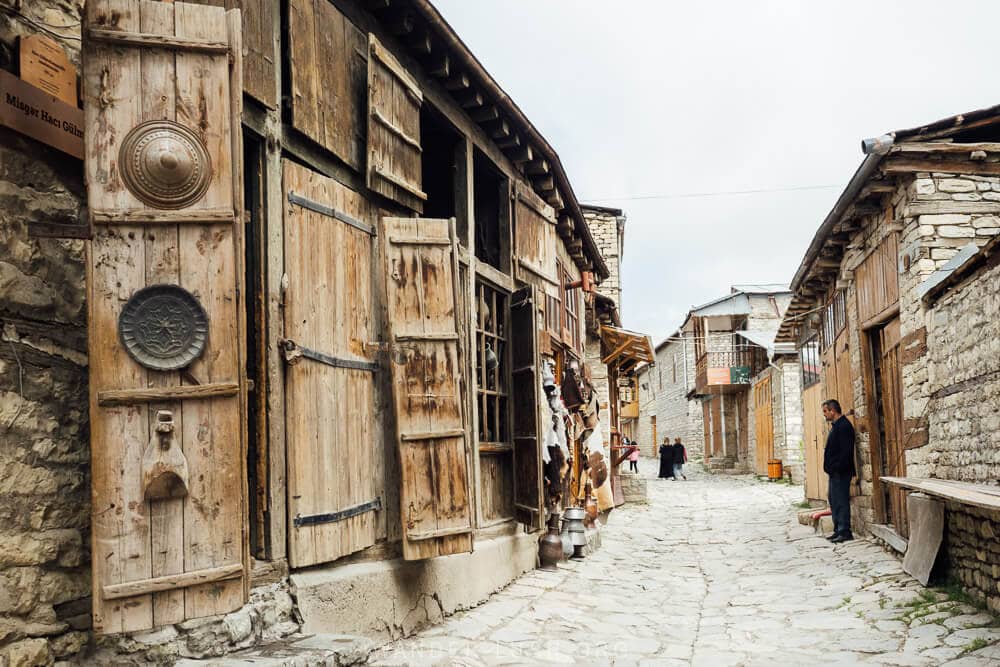
Buried deep in the Greater Caucasus in northeastern Azerbaijan, around 180 kilometres (112 miles) from Baku, Lahic (AKA Lahich, Lahij) is a tiny village of less than 1,000 people. The copper workshops that line the main street are its calling card, and the reason why Lahic has become a well-established stop on Azerbaijan’s tourist trail.
Lahic is a destination for anyone who is interested in handicrafts and traditional architecture, and for those who are looking for a step-back-in-time-type experience. The remote location in the Girdimanchai River Gorge is really quite spectacular – and the road up is quite something, too!
I visited Lahic for the first time last spring during my third trip to Azerbaijan. In this guide, I will share my tips for planning a visit and give you my honest thoughts about Lahic as a destination.
Please note: This post contains affiliate links, meaning I may earn a commission if you make a purchase by clicking a link (at no extra cost to you). Learn more.
Is Lahic worth visiting?
Lahic is one of the oldest settlements in Azerbaijan. It emerged as a centre of craftsmanship some 500 years ago, and gained a reputation for its artisans who had purportedly mastered no fewer than 40 types of folk arts.
Carpetweavers, tanners, blacksmiths and jewellers all lived and worked in Lahic at that time. But it was the coppersmiths and metal workers who really rose to prominence.
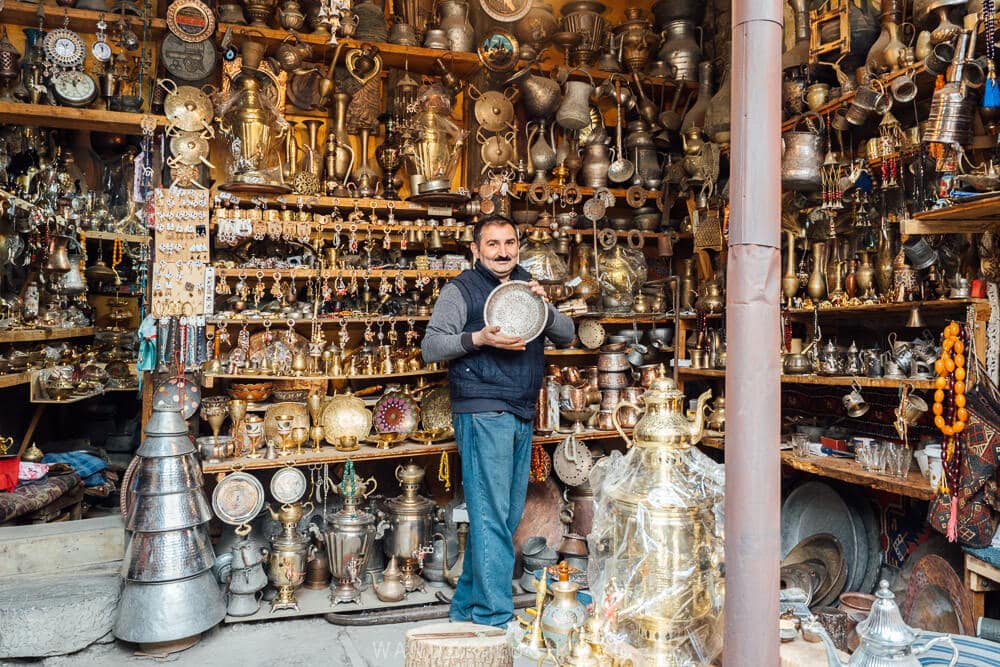
When it was a stop on the ancient Silk Road, Lahic traded in weapons and utilitarian objects crafted from metal – all beautifully embellished with ornaments. According to some sources, the skills of smelting and engraving were learned in Iran, where Lahic’s families have their roots. Tati Persian is still spoken in the village today.
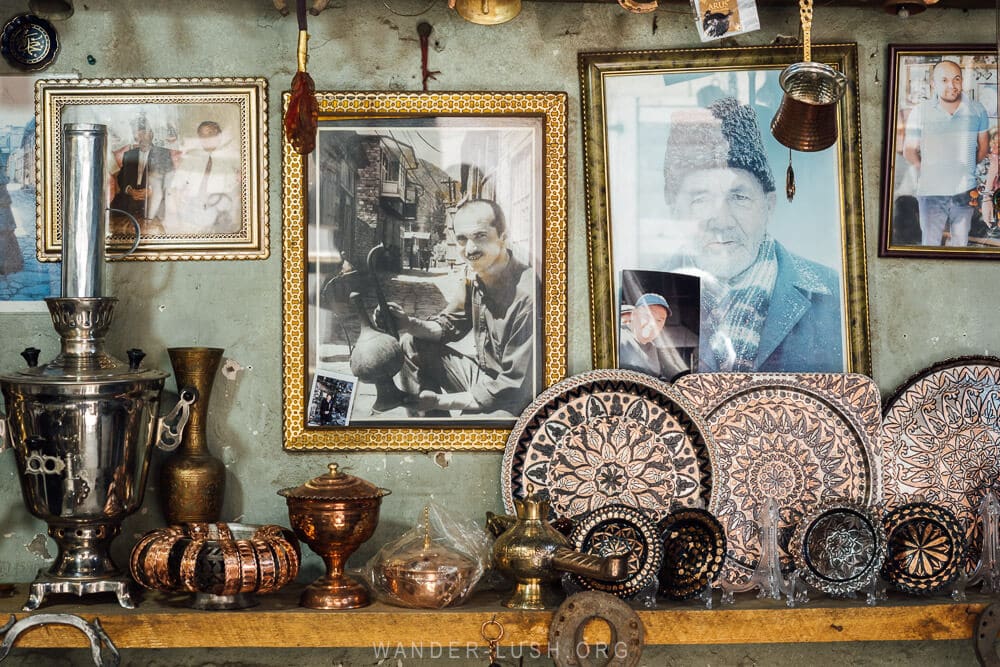
Lahic has an old-world feel, with much of the architecture still resembling the traditional dwellings developed to withstand the earthquakes that rock this region from time to time.
Families associate with different groups depending on their ancestral craft, and each has its own mosque, hammam and graveyard. The layout of Lahic around three different village squares also reflects this internal partitioning.
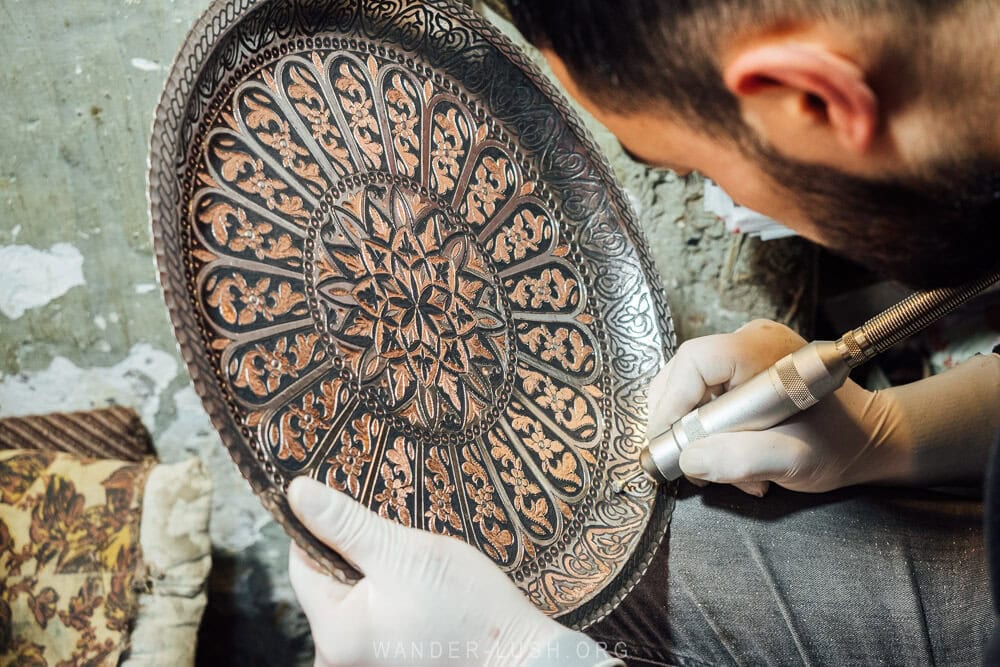
Tourism has been a part of life in Lahic ever since the 1980s, when the Soviet government established a Historical-Cultural Reserve here as a means to revive the waning artisan sector.
It’s no surprise then that Lahic does feel like a model village set up for visitors. It is undoubtedly charming, but it does come off as a bit contrived. It is certainly more commercialised than Khinaliq or even nearby Basqal, for example.
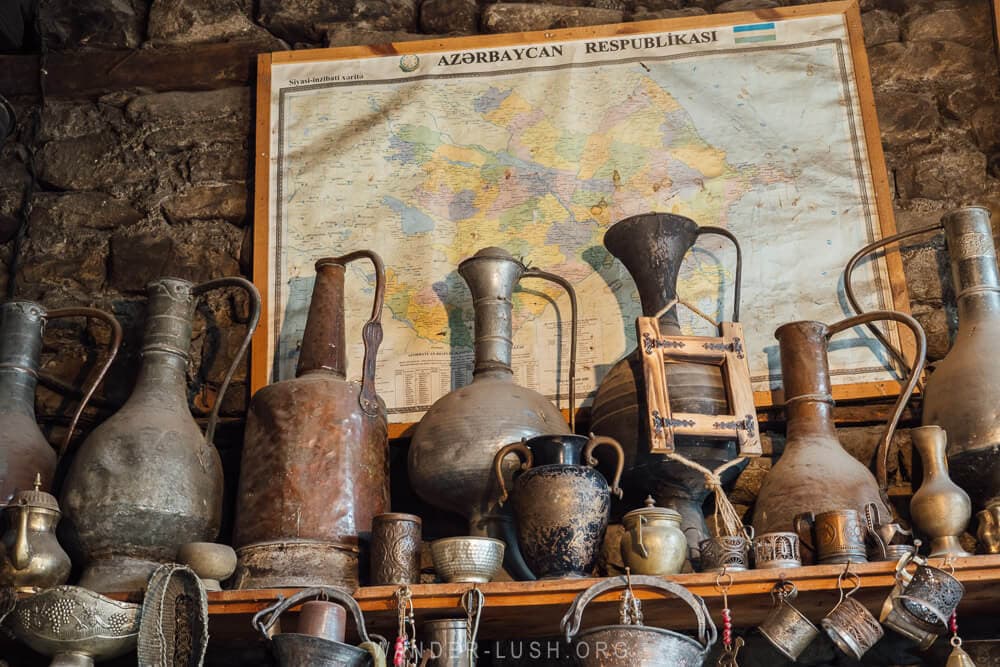
I do not regret visiting Lahic – as a huge fan of crafts, I really enjoyed the workshops which did seem to me to be legit. But I will admit that after hearing so much praise for Lahic, I was a little disappointed overall.
If you have more time, you can still find an ‘authentic’ village homestay experience in Lahic. But if you are looking to get off the beaten path in Azerbaijan, this might not be the best choice.
How to get to Lahic
Lahic is a 3-4 hour drive from both Baku and Sheki. There is no road between Quba/Khinaliq and Lahic – so if you plan to travel between the two mountain regions, you will have to go back through Baku first.
There is a back road to the village through Shamakhi, but the more popular route takes you off the highway at Tazakand. The final stretch of mountain road to Lahic takes around 30-40 minutes to drive. It is sealed but potholed and quite bumpy. We did it in a regular sedan and did not have any issues.
The road is steep and narrow in places, with cliffs on one side and a sheer drop on the other. In my opinion, it is less treacherous than the road to Khinaliq – and compared to some of the roads I have been on in Georgia (such as the Abano Pass to Tusheti), it is a piece of cake.
However, if you suffer from motion sickness or you have a fear of heights, you might find the journey challenging. I highly recommend you travel with a professional driver who is familiar with conditions.
At the time of my visit, a new tunnel and road was being constructed around Ismailli. Be prepared to encounter roadworks.
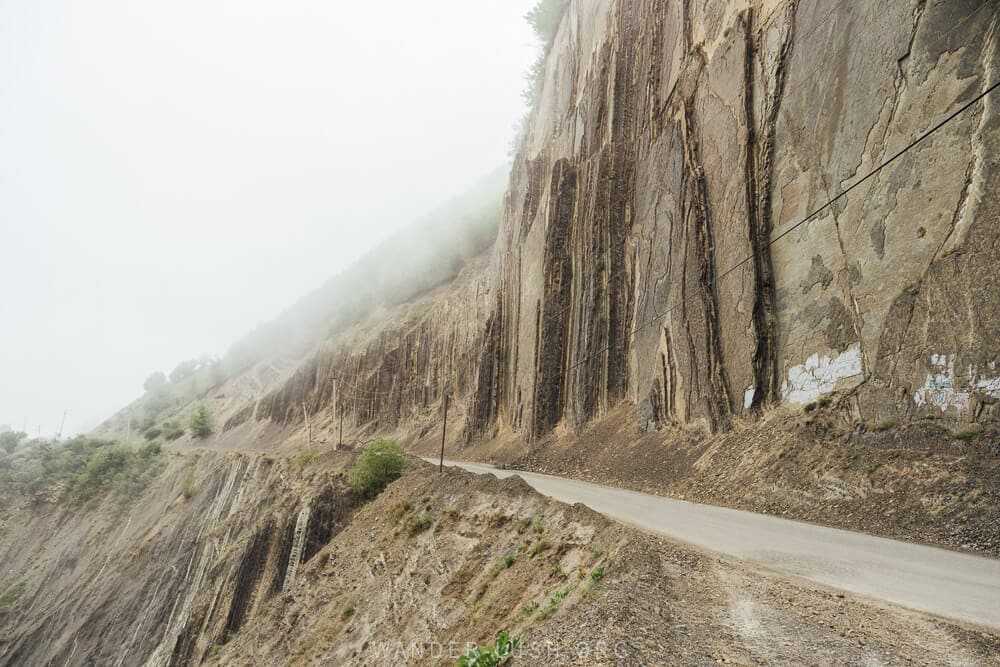
Baku to Lahic by car
There are two options for getting to Lahic by car: Rent a vehicle and drive yourself, or hire a private car and driver.
If you opt for the former, be sure to check conditions locally before you set off. The weather can change rapidly in the high mountains and this area is prone to mudslides. I recommend using Local Rent to find an affordable rental car in Azerbaijan.
When I visited Lahic with my dad, we went with a private driver. We preferred this option because we were travelling one-way from Baku to Sheki.
Lahic was included as part of our transit tour with TES Tour. This one-way overnight excursion is a great option if you’re travelling towards the Georgian border, provided you are content with a short visit to Lahic (a couple of hours is really all the time you need).
As you approach Lahic, you will see a parking bay on the riverside. Vehicles need permission to drive into the village, so unless you are staying the night in Lahic, you will need to park here and walk the rest of the way (less than 10 minutes by foot).
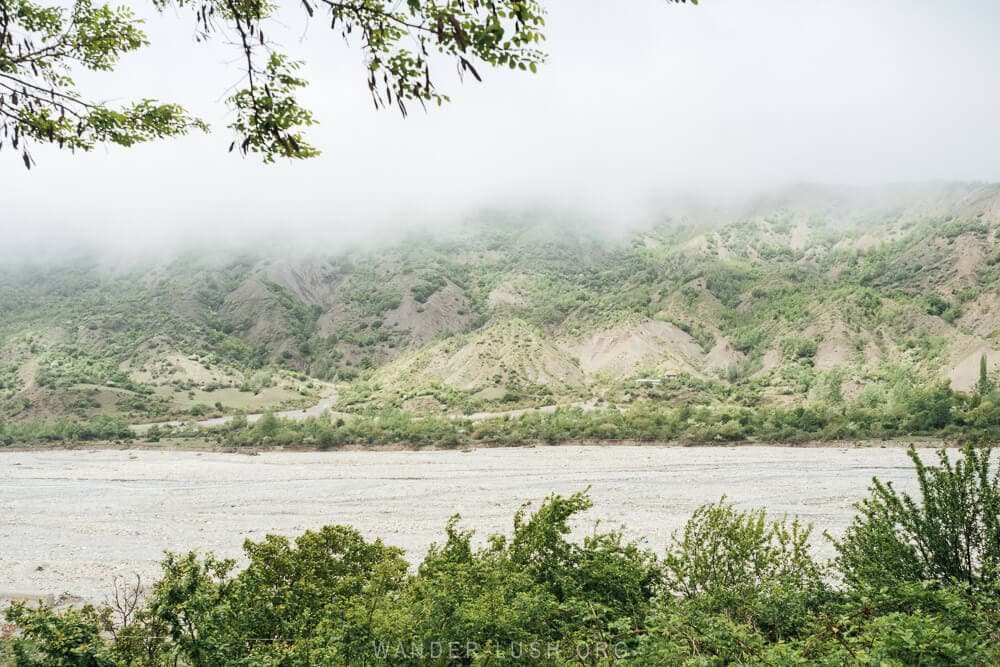
Baku to Lahic by bus
There is no direct public transport link between Lahic and Baku. Instead, you will first need to take a marshrutka to the closest city, Ismailli, then continue by local van or taxi from there.
There is currently one morning minibus to Ismailli from Baku, departing from the International Bus Terminal at 9am and arriving in Ismailli just after 1pm. A ticket costs 8 AZN. Double-check times and prices on Biletim (route: Bakı-İsmayıllı).
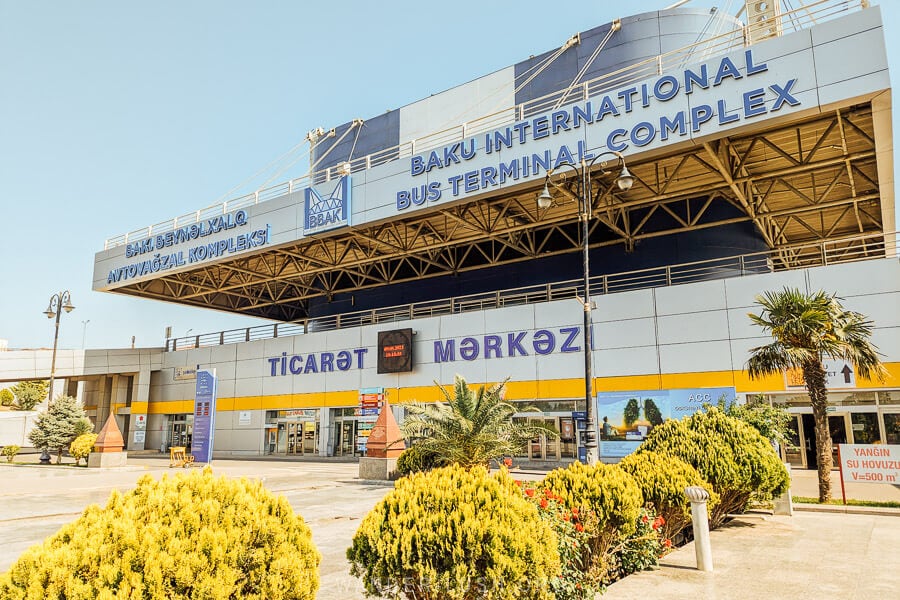
Ismailli is located after the turn-off for Lahic. Don’t jump out on the highway, though – continue all the way into town, where you will be dropped off at the Avtovagzal. Local buses to Lahic depart throughout the day (there will likely be one waiting to meet passengers arriving from Baku; tickets cost around 5 AZN), or you can try to find a taxi driver for the final leg. This should cost somewhere in the neighbourhood of 60 AZN.
For the return trip to Baku, a van departs from Ismailli at 2.15pm. There might also be onward connections to Sheki and Ganja – check locally at the bus station.
Day tours to Lahic from Baku
Lahic is a popular day trip from Baku, with dozens of different companies operating group and private tours.
My recommendations are:
Where to stay in Lahic
There are a handful of homestay-style guesthouses in Lahic for those who want to spend a night in the village. All offer meals (dinner and breakfast at a minimum) – and given the lack of food options, I would highly recommend taking your host up on the offer.
Abbasov’s Guest House is the top-rated, with tidy rooms that sleep up to six people. Lahic Guesthouse and Ancient Lahij Guest House have similarly good reviews. All are located at the eastern end of the village.
Visiting the Lahic coppersmiths
Lahic’s main attraction is of course the copper workshops that line the main drag, Huyseynov kuc. After a short walk between the stone houses that line the top of the street, you will soon come to a row of shops with wooden facades and heavy shutters.
The set-up reminds me a lot of the old Ottoman-style bazaars you see across the Balkans, especially the one in Gjakova in Kosovo. Some of the ateliers have new windows, and many are fitted with a wooden shop sign above the door for uniformity.
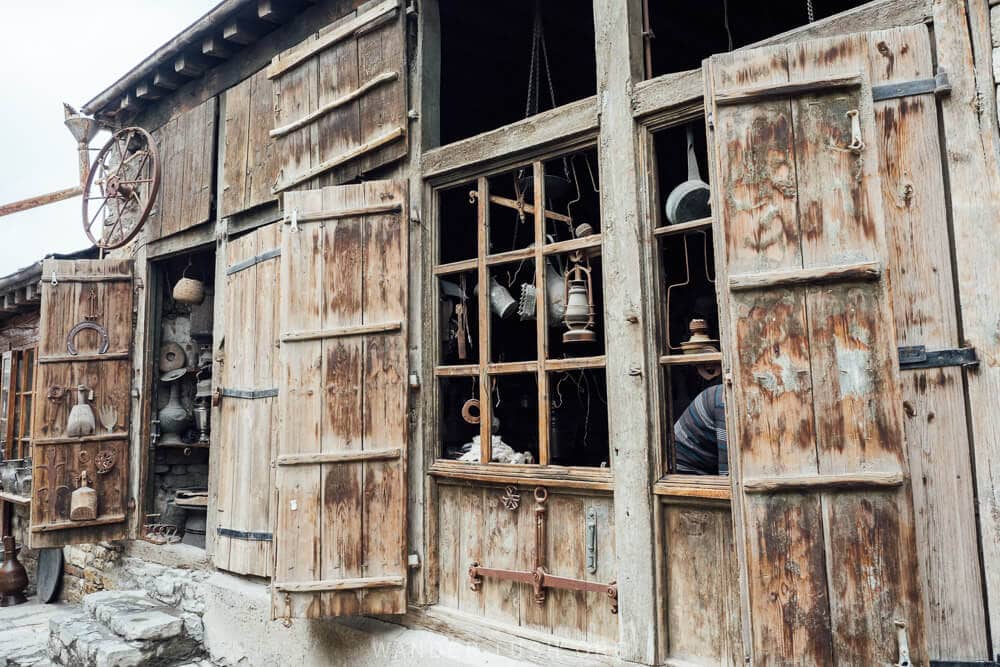
Visitors are free to wander in and out of the workshops as they please. Our approach was to wander the row and see which particular rooms caught our eye, then venture in.
Most are dark and a bit dusty, but oh so atmospheric! Some have an open fire and smelting equipment out in full view. (If you are travelling with kids, keep a close eye on them!)
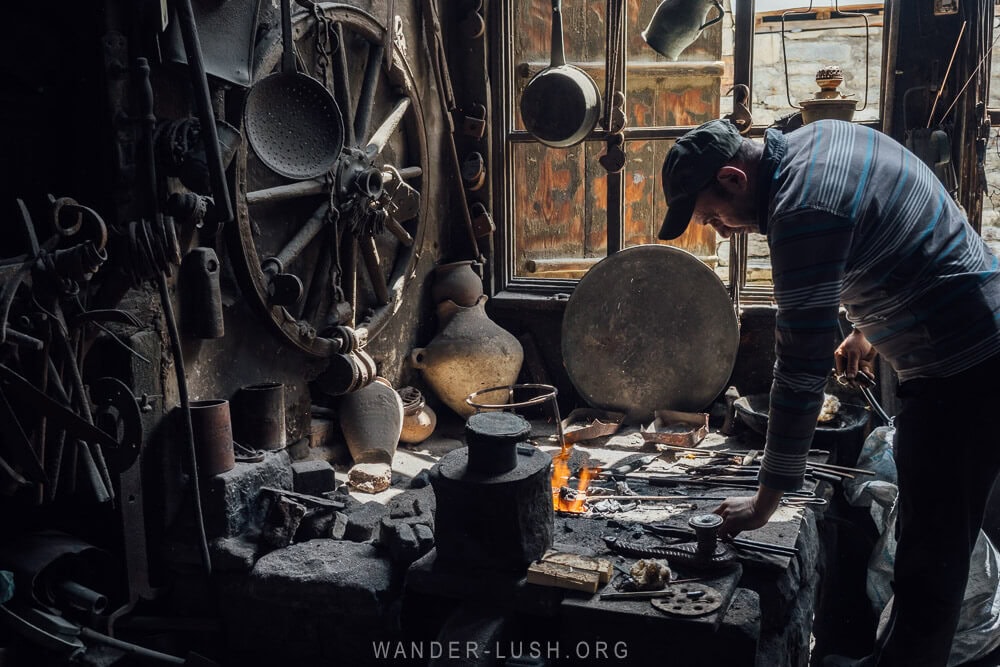
Artisans are welcoming and in our experience, no one pushed us to buy anything. We did pick up a souvenir (see the next section), but we just as easily could have browsed and still felt comfortable.
It is interesting to see the different stages of the trade being played out inside the shops. As we moved between the different businesses, we saw everything from metal being melted over the fire to the final stages of engraving and polishing.
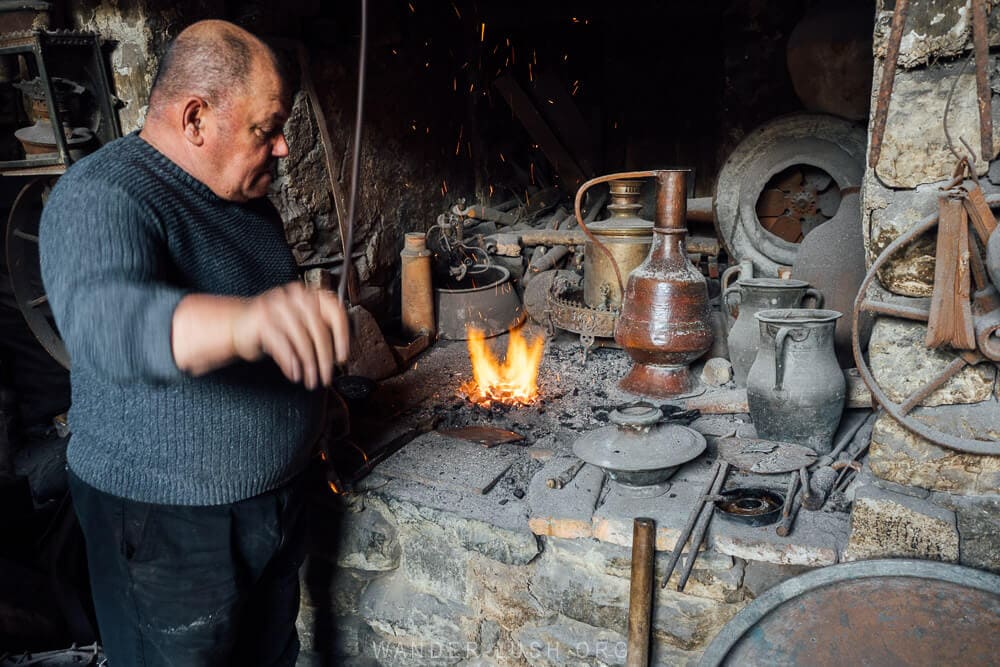
Just like on the streets of Sarajevo, you will hear the tinny banging of hammers on metal as you walk up and down. Even though not everything sold in these shops is made by hand, it’s quite obvious that the items that are created onsite are made almost entirely by hand.
One artisan we met was fanning his flames with an old pair of bellows.
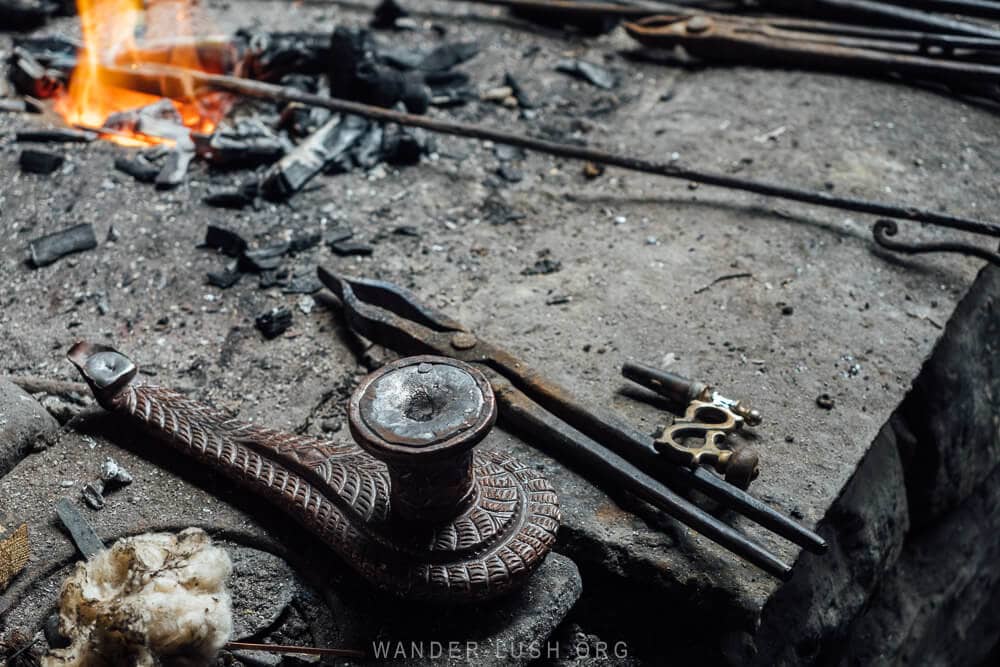
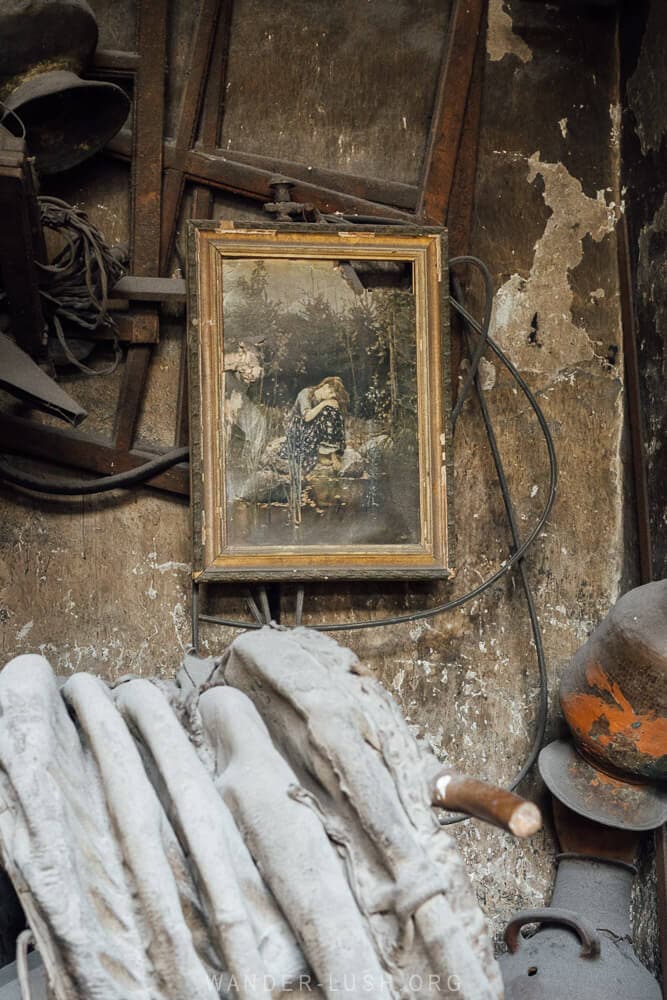

I enjoyed browsing the shelves of metal objects – but much more than that, I loved watching the artists at work, and also noseying about the workshops to observe the little details here and there: old family photos, antique maps – and in one shop, a picture of Lenin hanging above the furnace!
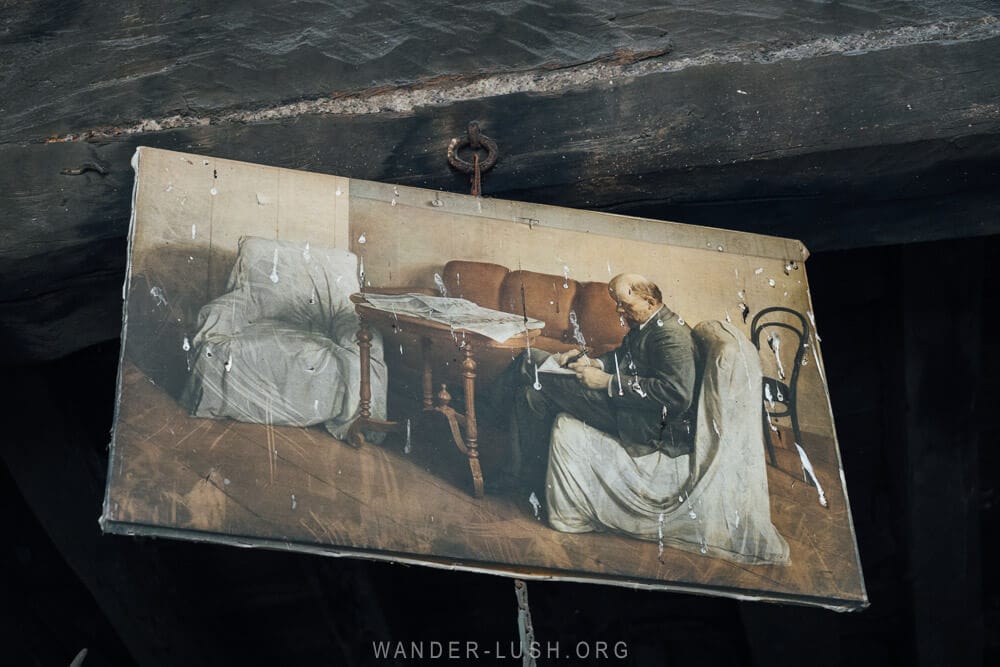
Shopping in Lahic
All the workshops in Lahic double as shops. From what I observed, the range of items is virtually identical between the different businesses.
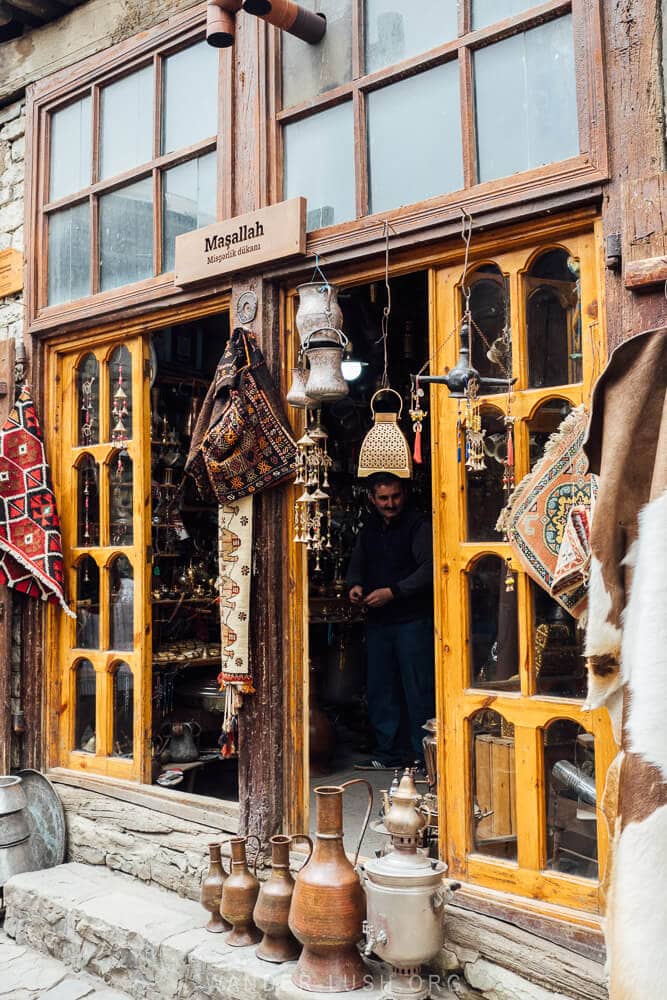
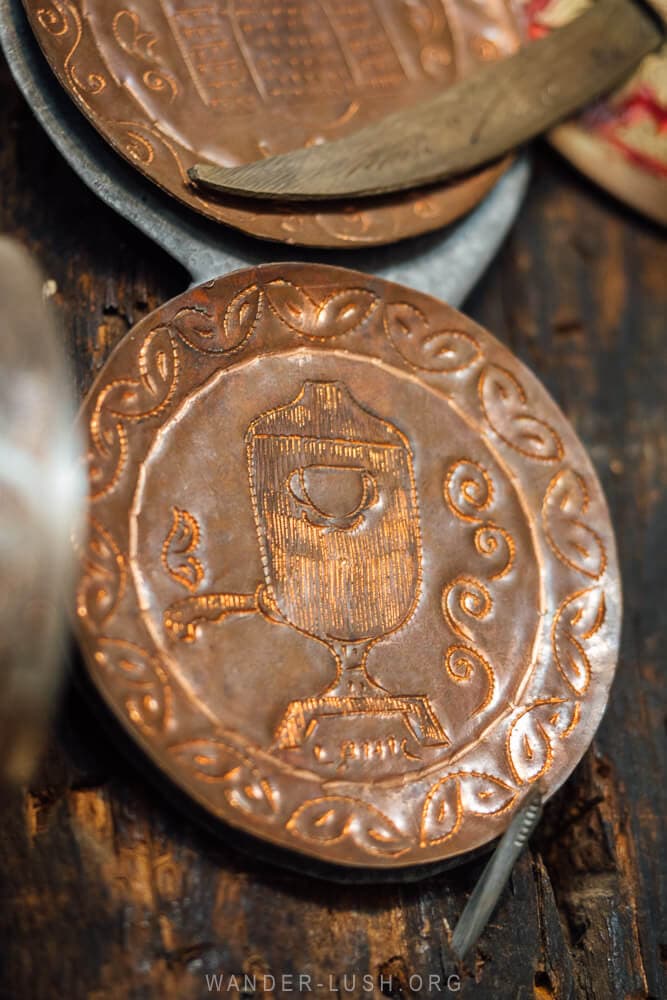
Among the items that appeared to be handmade we saw samovars, Turkish-style cezve coffee pots, and decorated plates. At most places you will also find antiques and pre-loved items mixed in with the new.
And almost always there will be nicknacks – keychains, jewellery, ashtrays and the like – that are clearly mass-produced and imported.
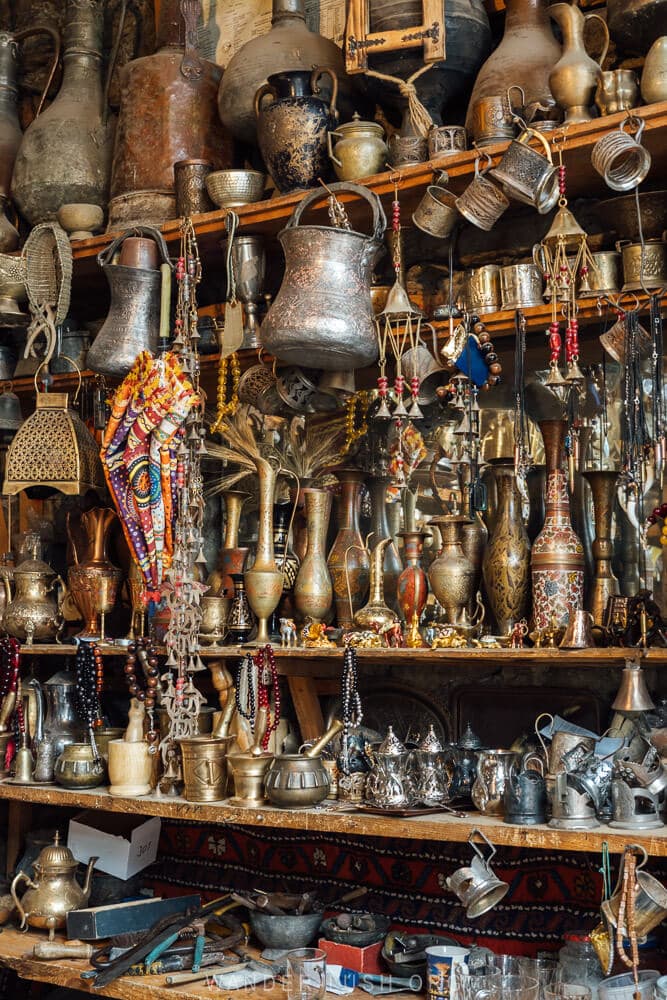
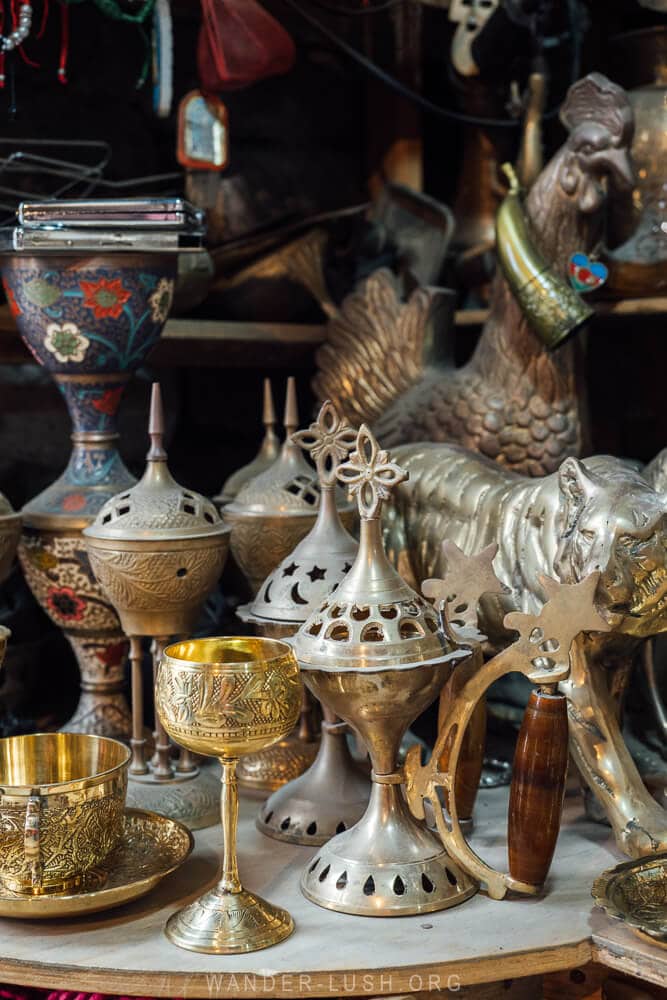
We wanted to buy something special, so we opted for one of the plates. We saw men working on these plates in several workshops, so we figured there was a better chance that there were made in Lahic.
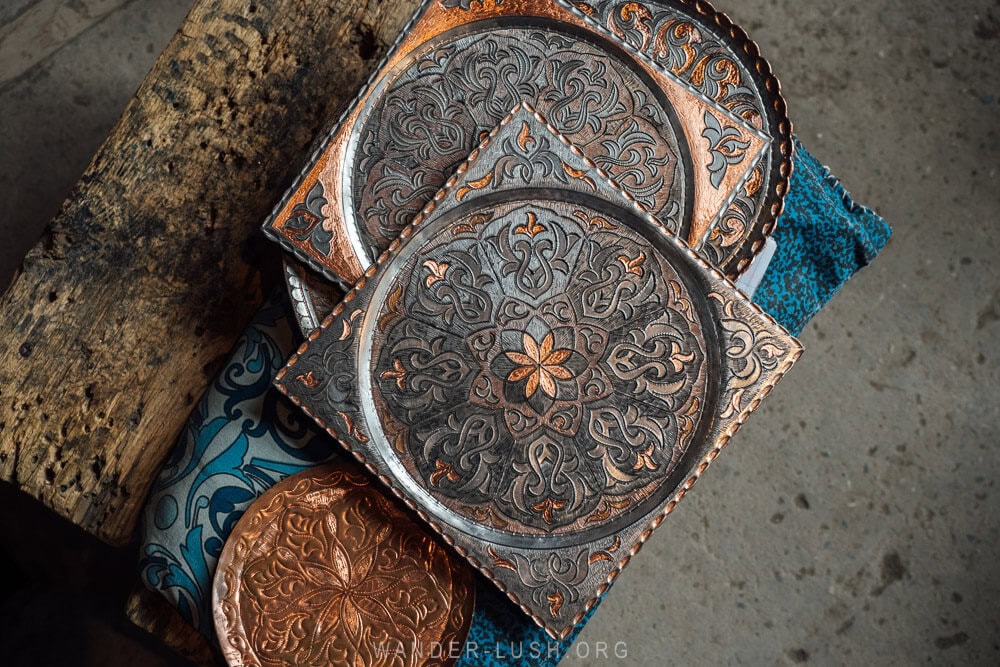
After we chose a mid-sized plate, the owner of the shop offered to engrave it for us. He added the name of the village and the date to the back – a very nice touch!
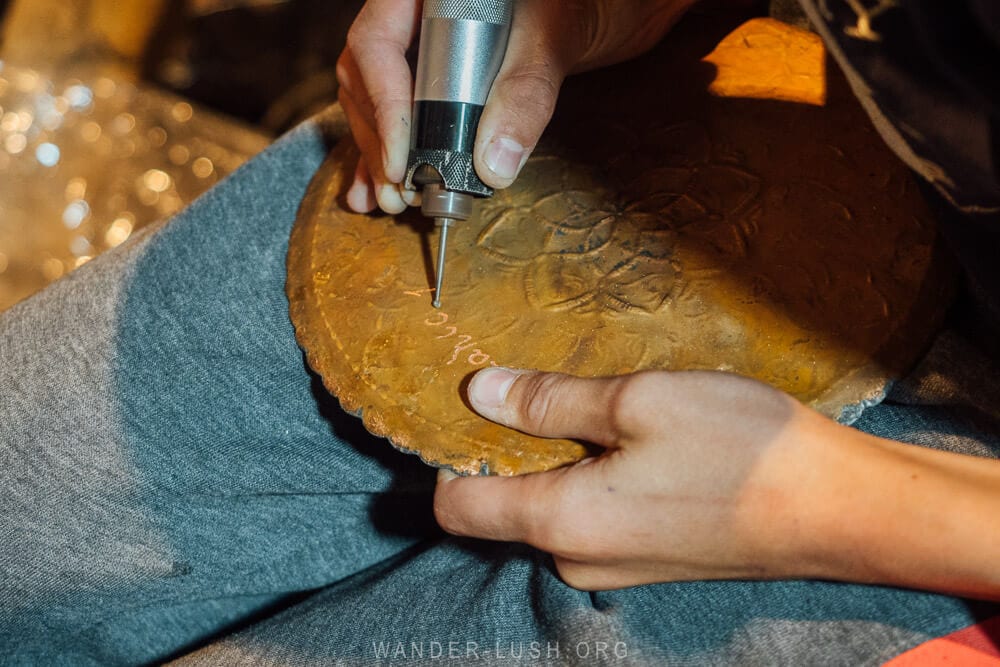
One thing to note is that these metal plates are extremely heavy, so they might not be suitable to carry around if you are travelling light. My dad decided to gift his plate to me before he flew back to Australia, as it was no problem for me to keep it at my place in Georgia.
Shops in Lahic sell other Azerbaijani souvenirs – both traditional and non-traditional – as well, but at the end of the day copper is the specialty here and the item you want to focus on. Wait until you get to Sheki to buy a silk kelagayi scarf!
Other things to do in Lahic
Lahic old streets
Aside from the copper workshops, Lahic has some lovely old houses that you can admire by walking laps through the village. Huyseynov kuc is filled with grand single and two-storey stone homes, some of them with new roofs and modern extensions.
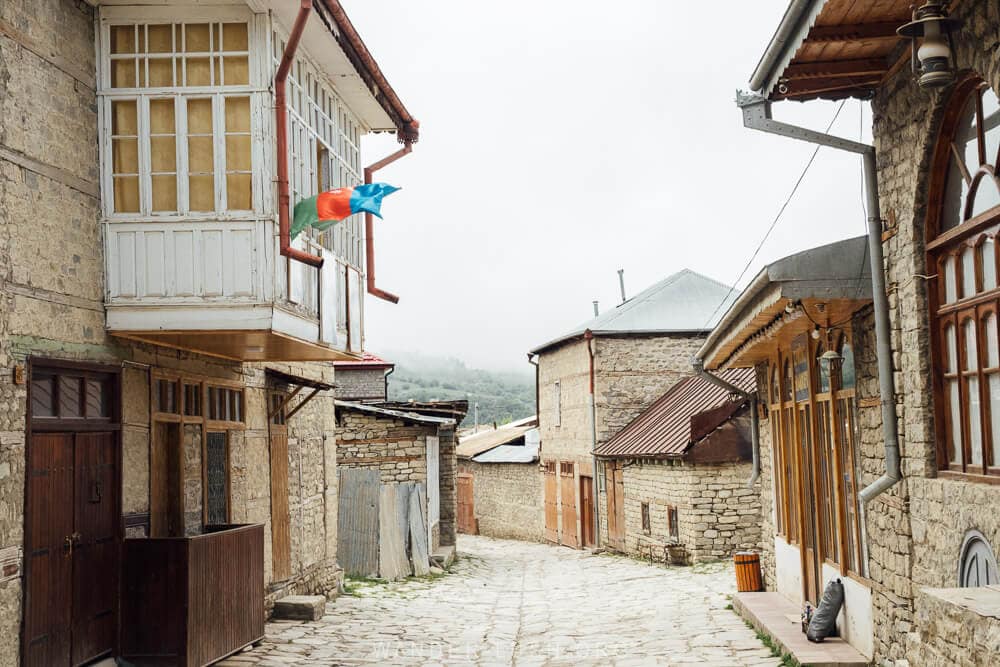
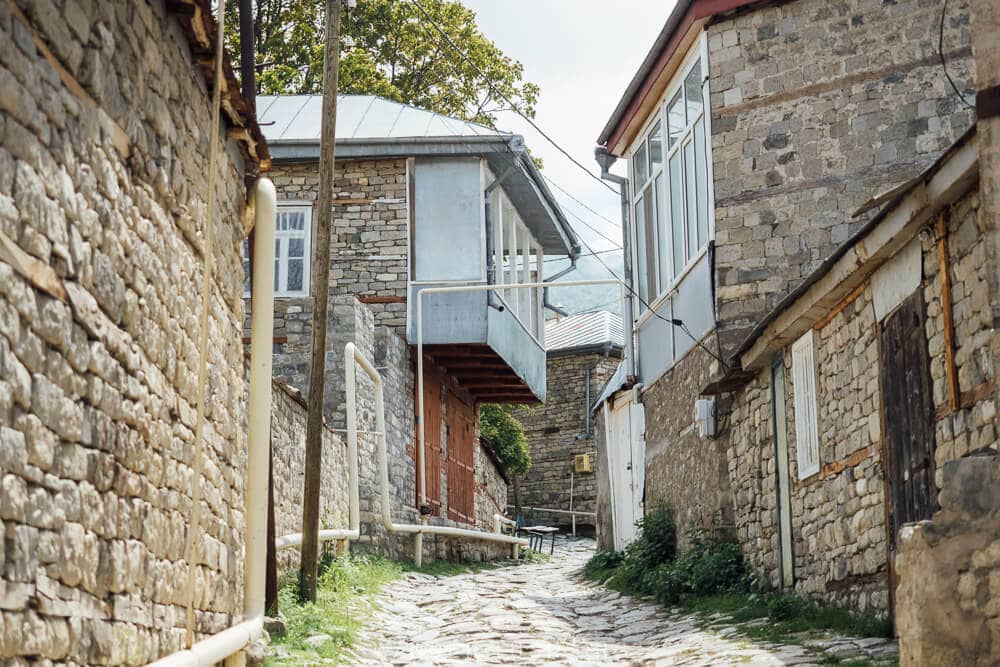
Some of the houses along the sidestreets are in rougher condition.
Lahic Museum
Located right at the entrance to the village, the Lahij Museum of History and Local Studies is a very small museum that you can survey in about five minutes. Honestly, it could do with some love – the building is wonderful, but there is no signage inside, and the collection is rather sparse.
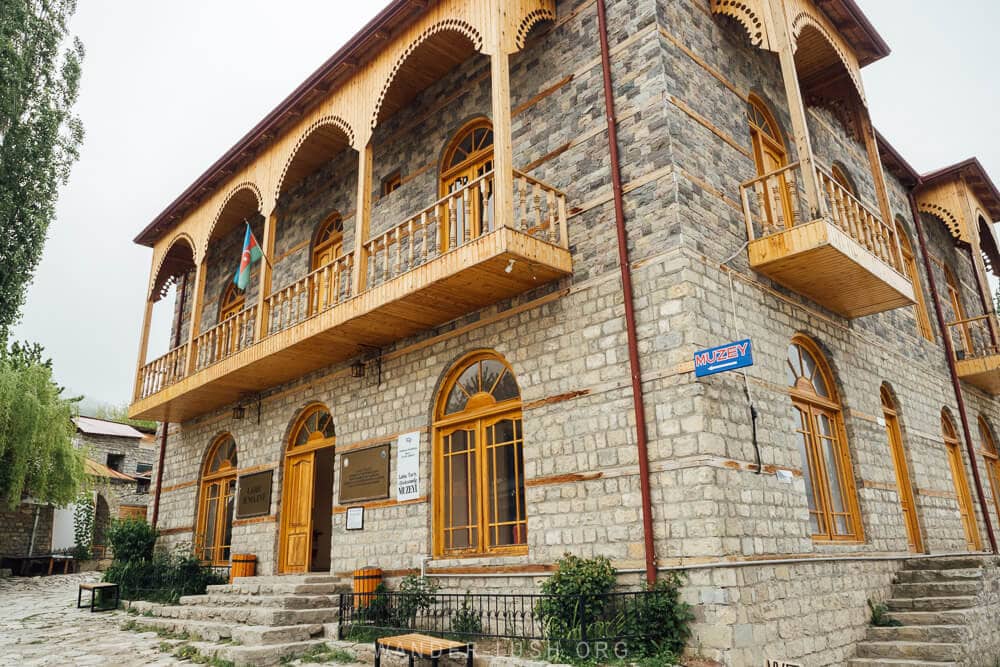
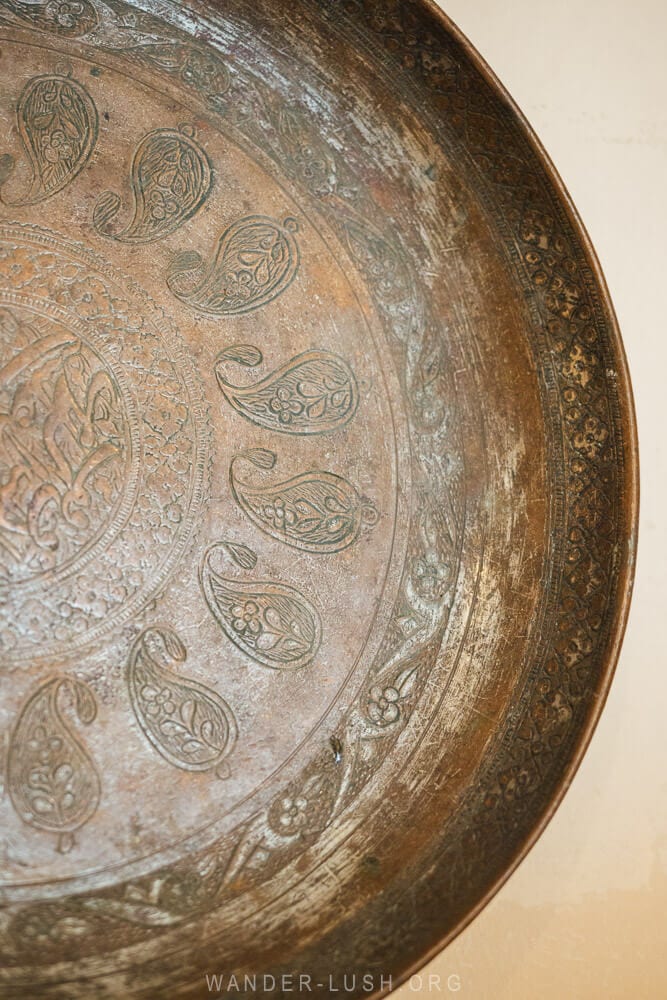
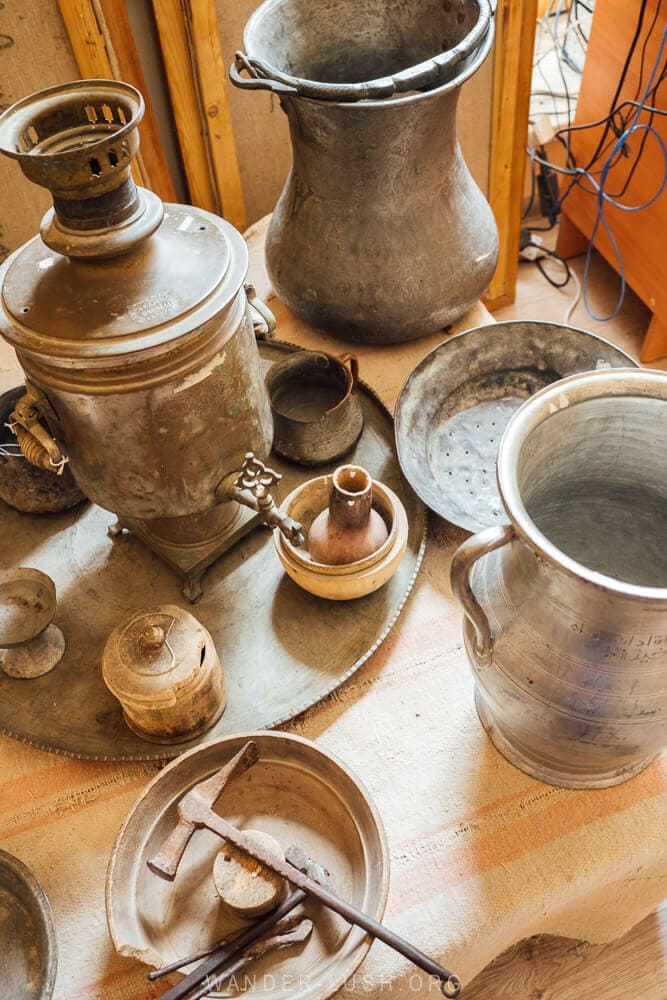
There are a limited number of things to do in Lahic – and tickets to the museum only cost 3 AZN – so if you have time, why not take a wander through.
Lahic Mosque
Lahic’s powder-blue mosque, the Zavaro Mosque, dates to the 19th century. It can be found up a quiet side street. Apparently the mosque has an adjoining museum, but it was closed at the time of our visit.
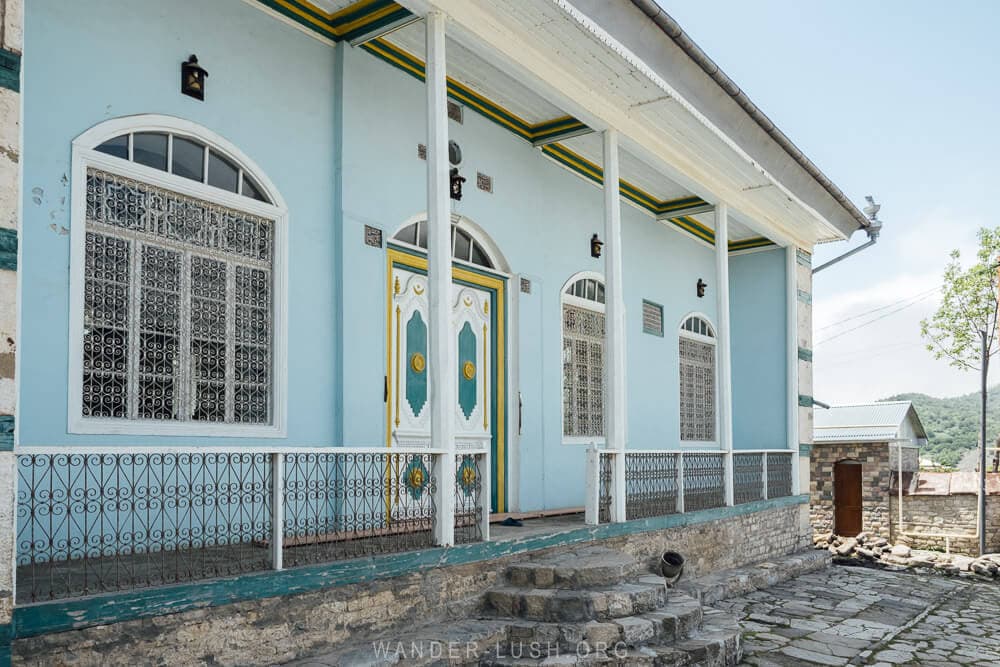
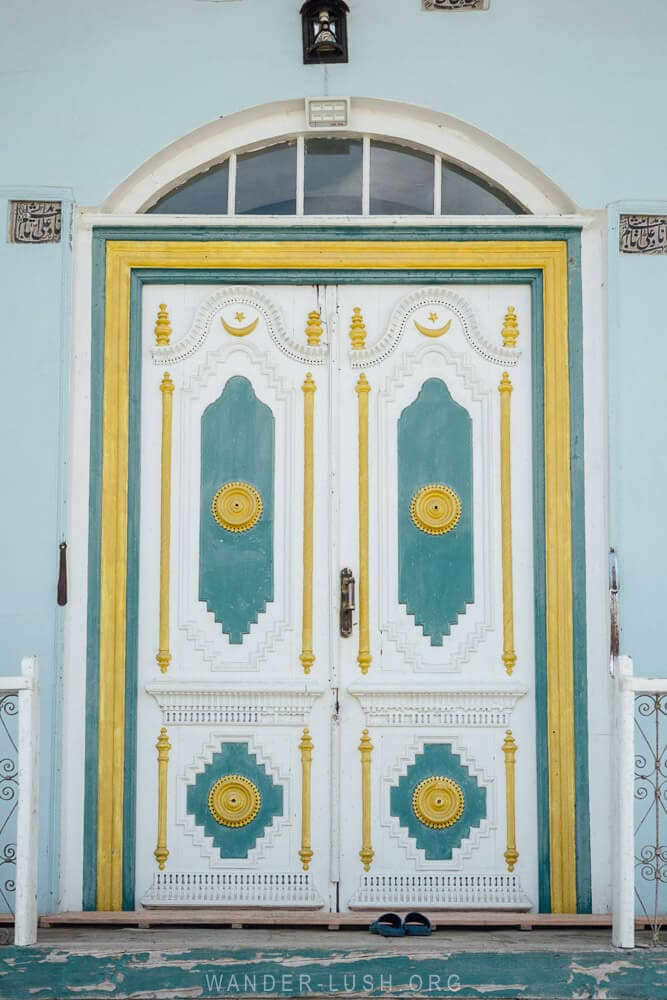
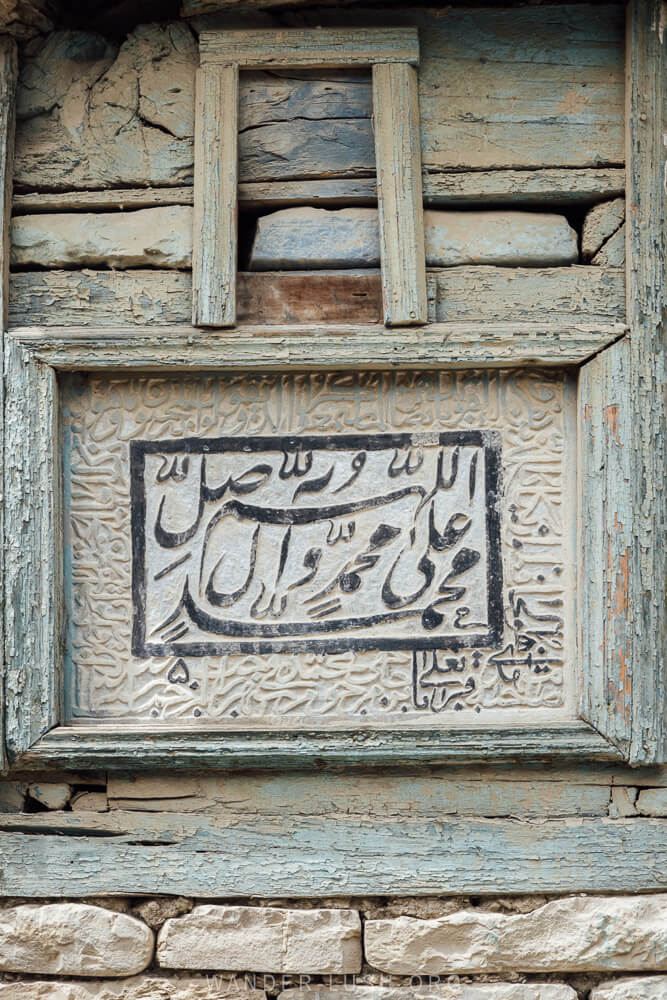
The mosque has a lovely painted door and nearby, there is a water fountain with an Arabic inscription.
Copper village panorama
At the main intersection near the museum there is a large copper panel hanging on one of the stone walls. Look closely, and you will see that it is a miniature panorama of Lahic village, with its streets and architecture mapped out.
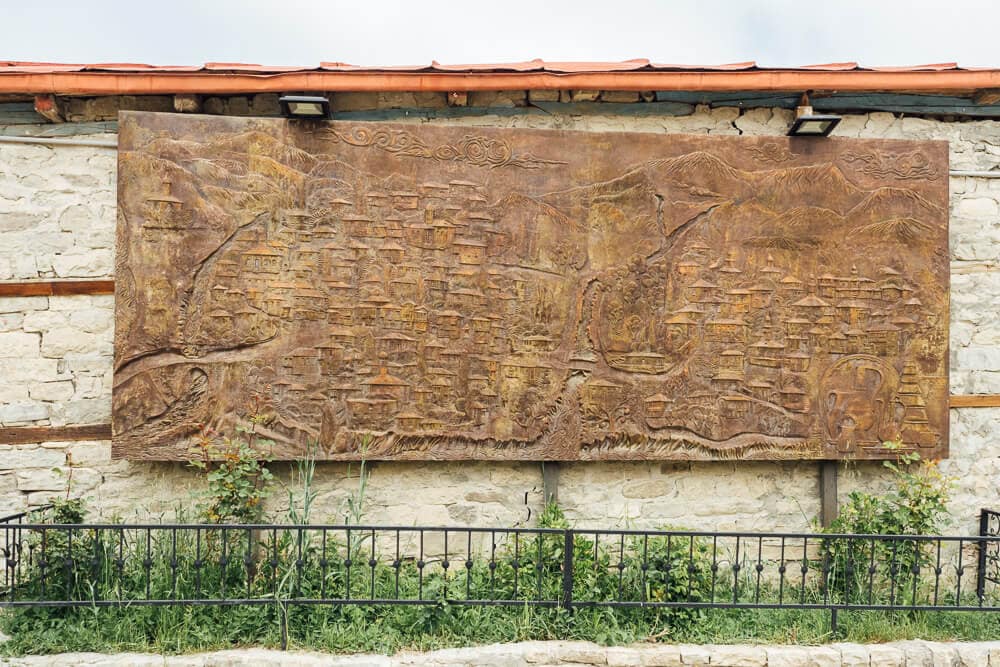
I completely missed it when we entered and only spotted it on the way out.
Zarnava Hanging Bridge
Located roughly halfway up the mountain road to Lahic, the Zarnava Hanging Bridge is a suspension bridge that dangles over the river gorge. If you need to stretch your legs (and take a moment to compose yourself after the first part of the drive), this is a safe place to stop, with a parking area carved out on the side of the road.
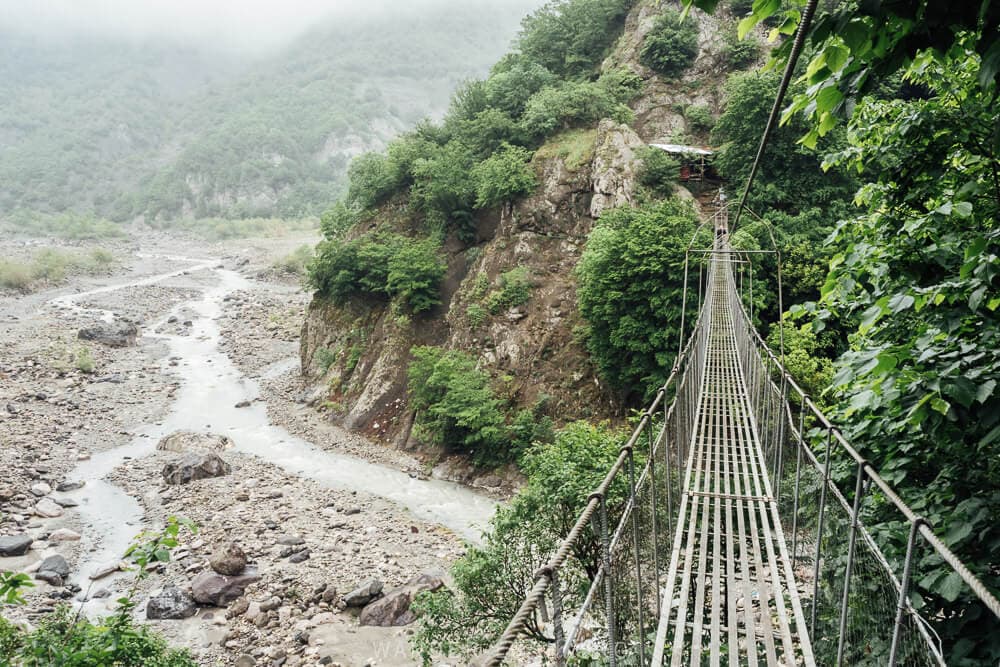
It costs a couple of AZN to cross the bridge, but you can get great photos from the abutment without having to pay.
Lahic travel tips
Food & drink: Food options in Lahic are limited. We did not stop to eat or drink here – and based on the reviews I have read online, I’m glad we made that decision. As I mentioned, Lahic is quite commercial and it seems that unfortunately some restaurants and tea houses do take advantage of visitors by overcharging. There are small restaurants along the highway that have better reviews, so I recommend waiting to visit one of these if you can.
ATMs & money: There is one ATM in Lahic belonging to Kapital Bank (see the location here). I recommend you bring enough cash with you from Baku to buy a souvenir.
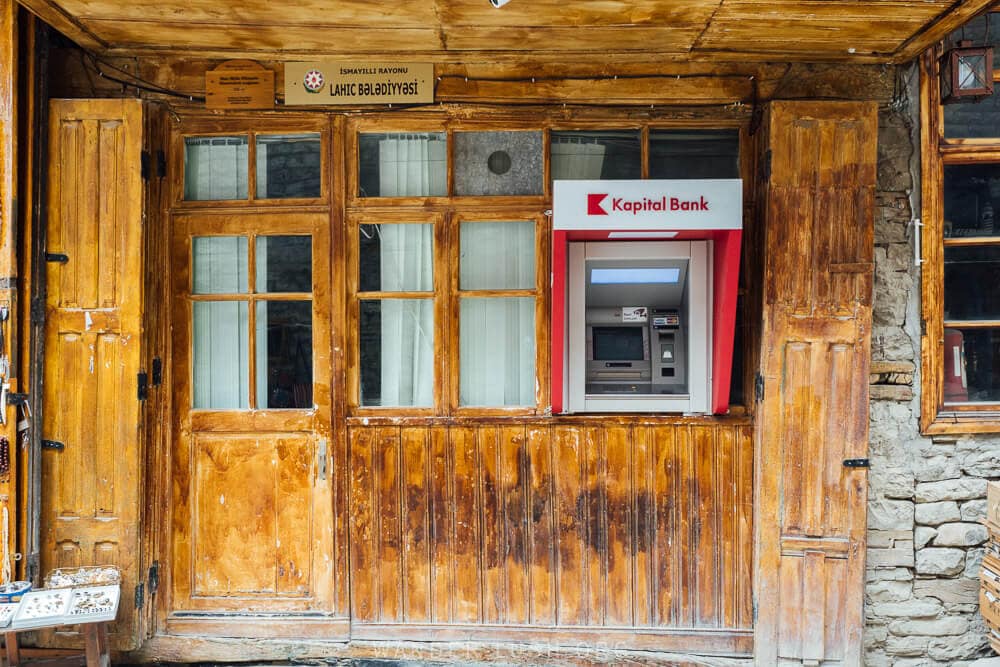
WIFI & mobile coverage: My local Azercell SIM card worked just fine in Lahic. At one point on the drive up, my 4G dropped out, but it was back by the time we arrived in the village.
Have you been to Lahic? What was your experience like? Do you have any tips to share or questions about visiting?



